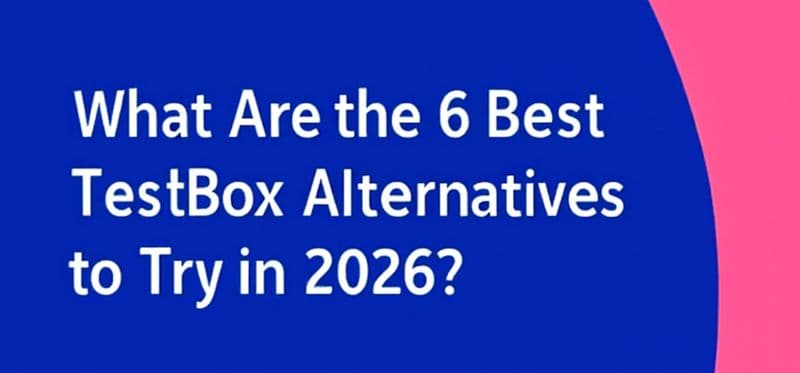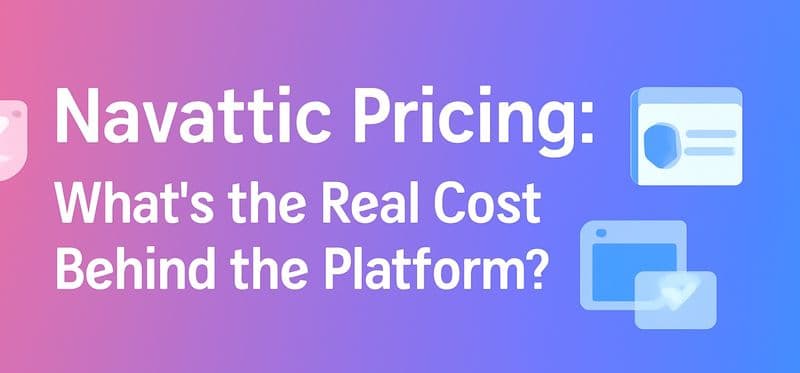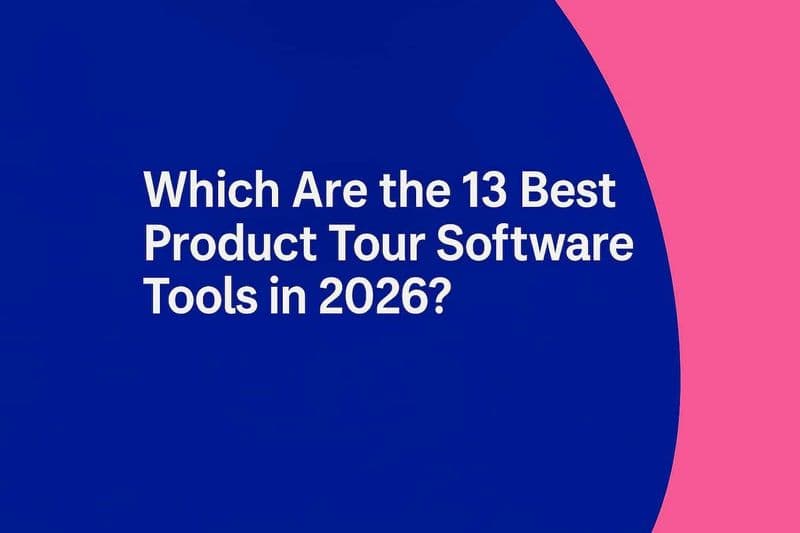Nobody wakes up thinking, I need new software today. What they do think about are the problems slowing them down—manual processes eating up hours, missed revenue opportunities, and frustrated teams struggling with outdated tools.
That’s where SaaS sales come in. You’re not just selling a product—you’re selling a solution to a real problem that addresses their specific needs and helps improve your SaaS sales metrics. But here’s the challenge: if your sales process doesn’t highlight that value at the right time, in the right way, potential customers will walk away.
In this blog, we’ll break down the key stages of the SaaS sales funnel, show you what metrics actually matter, and share proven strategies to optimize your process—so you can close deals faster and achieve your sales goals while turning customers into long-term advocates.
What Is SaaS Sales?
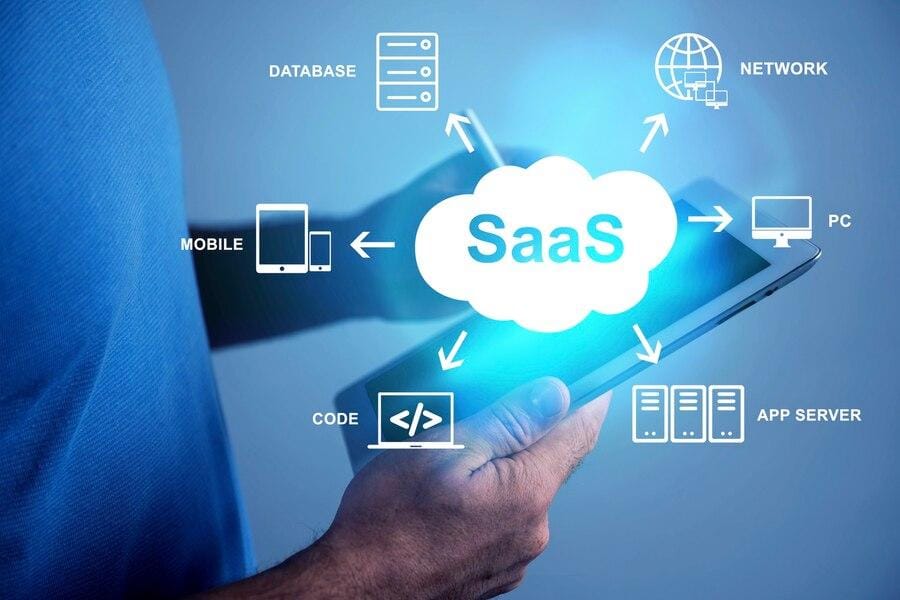
Selling Software as a Service (SaaS) is about solving problems with cloud-based SaaS software and a subscription-driven model, which often requires a strong focus on customer service and consultative selling to not only acquire new customers but also retain current customers. Unlike traditional software that requires expensive licenses and complex installations, SaaS is hosted centrally and delivered over the internet, allowing users to access it instantly from any device with a browser.
What makes SaaS different? Instead of a one-time purchase, businesses pay a recurring subscription (monthly or annually), covering everything from product updates to security and customer support. This flexible model lowers upfront costs and makes powerful tools—like Google Workspace, Microsoft 365, HubSpot, and Shopify—accessible to startups and enterprises alike.
For sales teams, this means the game isn’t about just closing deals—it’s about building long-term customer relationships, ensuring retention, and continuously proving the value of the product. The question isn’t just “Will they buy?”—it’s “Will they stay?”
While you are there, check out our blog on 10 SaaS sales enablement tools here!
How do SaaS Sales Differ from Traditional Sales?
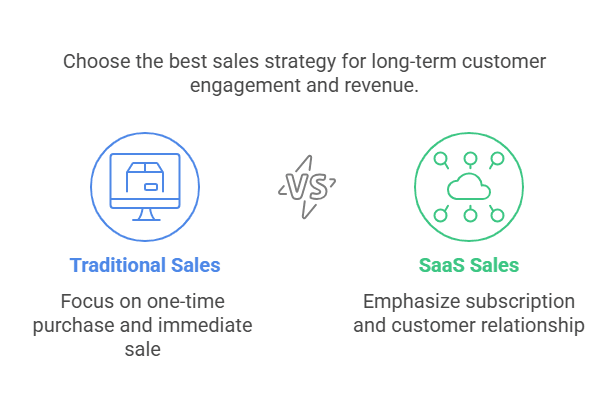
Let’s say you’re selling software—one as a traditional one-time purchase and the other as a SaaS subscription. Here’s how the sales process plays out in each case:
Scenario 1: Traditional Software Sales Pitch
You’re a sales rep for a company selling desktop-based project management software. A potential customer walks into your office or visits your website. Your goal? Convince them to buy the software upfront.
Your pitch might go like this:
"This software has everything you need for project management—task tracking, reporting, and collaboration tools. You pay a one-time fee, install it on your computers, and it’s yours forever. If you want support or upgrades, we offer additional service packages."
The customer considers the features, weighs the cost, and decides whether to buy. Once they do, your job is pretty much done—except for occasional support or upselling future versions.
Scenario 2: SaaS Sales Pitch
Now, let’s say you’re selling a cloud-based project management platform. Your approach is completely different.
Instead of pushing for an immediate sale, your pitch focuses on getting the prospect to sign up for a free trial or a low-cost subscription.
"I’d love for you to try our platform! You can sign up in seconds—no downloads, no setup. Our AI-powered automation will streamline your workflow, and you’ll get real-time collaboration tools to keep your team on track. Plus, we’re constantly rolling out updates, so you’re always using the latest features—no extra cost."
Rather than ending at the point of sale, SaaS sales rely on nurturing the relationship. You follow up, ensure the customer understands the platform’s value, and keep them engaged so they renew their subscription rather than cancel.
Here’s a quick breakdown of how the two models compare:
Aspect | Traditional Software Sales | SaaS Sales |
|---|---|---|
Payment Model | One-time purchase | Recurring subscription |
Sales Focus | Closing the deal | Long-term engagement & renewals |
Customer Commitment | Permanent purchase | Can cancel anytime |
Delivery | Download/physical install | Cloud-based, instant access |
Support & Updates | Often paid separately | Included in subscription |
Post-Sale Interaction | Minimal | Continuous engagement to ensure retention |
Also, read our Step-by-step guide on how to launch a SaaS product here!
Breaking Down the SaaS Sales Process in 6 Stages
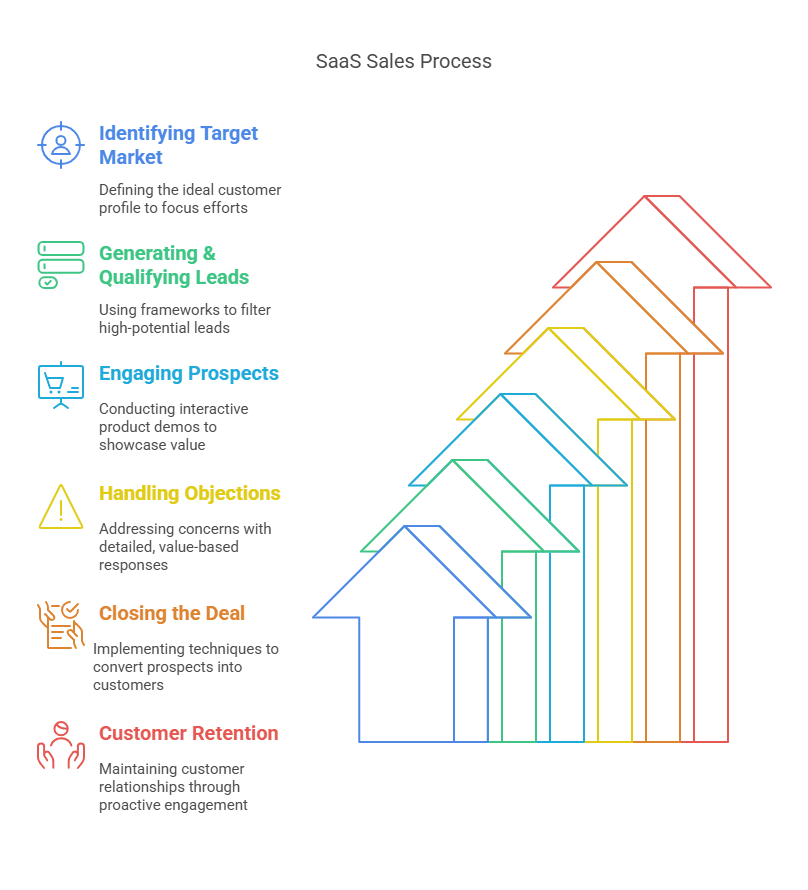
Every interaction, from the first touchpoint to post-sale engagement, is critical in shaping the customer experience. But how do you ensure that your strategies for the sales process are not only effective but also scalable?
In this section, we’ll break down the SaaS sales process into six key stages, showing you how to move leads seamlessly through the funnel while optimizing conversions and retention.
1. Identifying Your Target Market: Who Actually Needs Your Product?
A startup founder stumbles upon your website but leaves within minutes. Why? Because your solution is built for mid-sized marketing teams drowning in manual campaign management—not for a small business owner handling everything solo.
The Solution
Instead of targeting everyone, define your Ideal Customer Profile (ICP)—marketing managers at mid-sized B2B companies struggling with inefficient workflows. This clarity helps you refine your messaging, ensuring that the right people see the value of your product immediately.
Before generating leads, analyze who benefits most from your product. A well-defined ICP ensures you’re speaking to the right audience and not wasting time on prospects who won’t convert.
2. Generating & Qualifying Leads: Separating Curious Browsers from Serious Buyers
Once you know your audience, it’s time to attract potential customers—but not all leads are created equal.
For example, you launch a LinkedIn campaign that brings in hundreds of signups for your free trial. Sounds great, right? Except, most of them are small businesses with no budget for automation tools. They love trying out new software but rarely convert into paying customers.
Here is what you need to do-
Instead of focusing on raw numbers, use lead qualification frameworks (like BANT—Budget, Authority, Need, and Timeline) to filter out low-intent users. For example:
Does this prospect have the budget for a marketing automation tool?
Are they decision-makers or just interns exploring solutions?
Is there an actual need, or are they just curious?
How soon do they plan to implement a solution?
3. Engaging Prospects with Product Demonstrations
Now that you’ve identified serious buyers, it’s time to show them why your product is the perfect fit—not just in theory, but in action.
Instead of a traditional slide deck or feature list, offer an interactive product demo that directly addresses their concerns. Show them:
Seamless integration with their current tech stack.
Time savings—how automation can cut down repetitive tasks.
Ease of adoption—how quickly their team can get up to speed.
4. Handling Objections: Turning Doubts into Decisions
Even with a compelling demo, objections will arise. Instead of resisting, embrace them as opportunities to build trust.
For example,
Scenario 1- A prospect says, “Your tool looks great, but it’s too expensive compared to Competitor Y.”
How to deal with this?
Instead of discounting the price, shift the conversation:
Sales Rep: “I completely understand. Let’s break it down. While Competitor Y is cheaper, they don’t offer advanced automation + AI insights, which could save your team 20+ hours a month. Over a year, that’s X dollars saved. Would you like to explore how this ROI compares?”
Scenario 2- A prospect says, “We already have a solution in place, and switching would be too disruptive.”
How to deal with this?
Here, the goal isn’t to dismiss their concerns but to show how switching can be seamless and beneficial.
Sales Rep: “That makes sense—switching tools can be a hassle. But what if I showed you how easy the transition could be? With our migration support and automation tools, you won’t lose any data, and your team can be fully onboarded in less than a week.
Plus, unlike your current tool, we offer AI-powered workflow automation and built-in customer engagement tracking, helping you eliminate repetitive tasks and increase client retention. Would it be worth a quick walkthrough to see how smooth the switch could be?”
Rather than forcing a sale, this approach reassures the prospect and shifts the conversation to ease of implementation, better support, and higher efficiency—factors that often outweigh the pain of switching.
5. Closing the Deal: Converting Prospects into Customers
You’ve addressed concerns, and the prospect is interested—but they’re still hesitating. This is where the right closing technique makes all the difference.
Instead of a hard push, remove friction:
Offer a limited-time discount for an annual plan (if applicable).
Provide extended support or an onboarding session to ensure seamless adoption.
Send a final case study showing how a similar company achieved success with your tool.
Many SaaS companies offer custom onboarding packages or a longer trial period for high-value customers, easing their transition from trial to paid.
What you need to remember- Closing isn’t about pressure—it’s about making the decision easier for your prospect.
6. Customer Retention: The Real SaaS Growth Engine
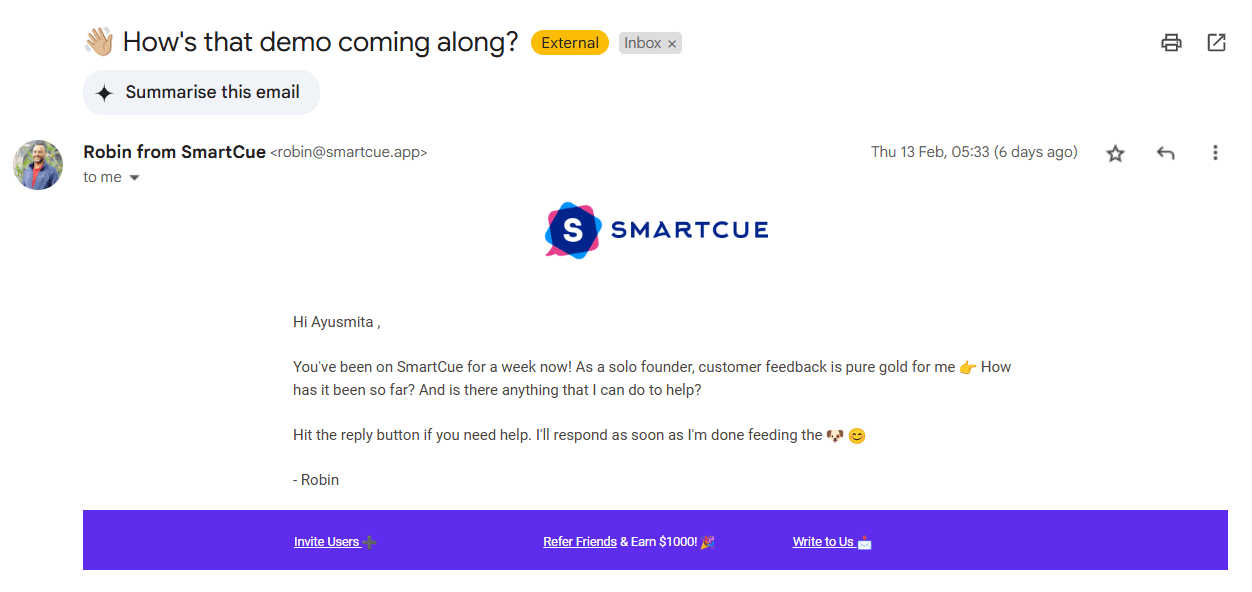
Winning a customer is the beginning of a long-term relationship. Unlike traditional sales, SaaS thrives on renewals, upsells, and referrals.
Your Mantra here should be- Proactive engagement. The best SaaS companies don’t wait for customers to cancel—they reach out before problems arise:
Automated check-ins: “Hey Robin, noticed you haven’t used our collaborative dashboard feature yet. Want a quick walkthrough?”
User milestones: Celebrate their first 10 automated campaigns or their first 1,000 leads generated.
Exclusive insights: Share insider tips or invite them to VIP webinars.
Companies that invest in customer success—offering personalized content, onboarding calls, and milestone-based engagement—reduce churn and increase lifetime value.
What are the 5 Benefits of a Well-Defined SaaS Sales Process?
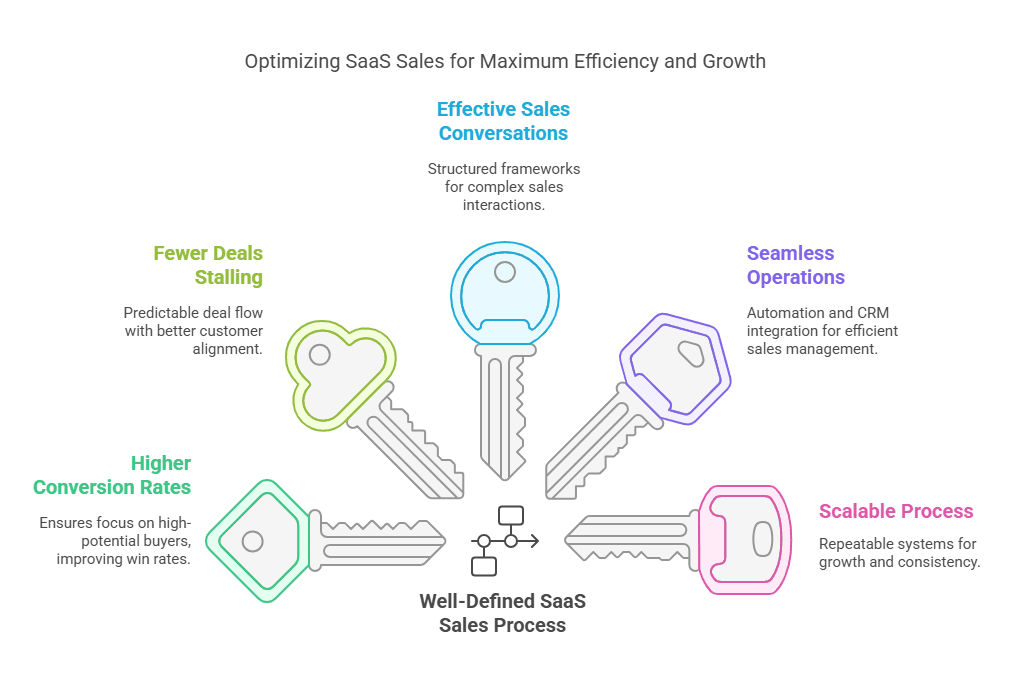
A structured SaaS sales cycle process isn’t just about
moving prospects through a pipeline—it’s about optimizing every interaction, improving efficiency, and increasing conversions. When done right, it minimizes wasted effort, enhances customer experience, and ultimately drives predictable revenue growth. Here’s how:
1. Higher Conversion Rates Through Precise Qualification
A well-defined qualification process ensures your team spends time on the right prospects instead of chasing leads that aren't a good fit and will never convert. By setting clear criteria at each stage—like budget availability, urgency, and decision-making authority—you can filter out low-intent leads early. This results in:
Shorter sales cycles by focusing on high-potential buyers.
Improved resource allocation as reps spend time on qualified leads rather than dead ends.
Higher win rates because sales conversations are more relevant and targeted.
For example, a SaaS company selling enterprise analytics software can integrate qualification frameworks like SPIN Selling to assess a prospect’s data challenges before positioning their solution.
2. Fewer Deals Stalling or Falling Apart
Rushing a deal through the sales pipeline without fully addressing customer concerns can backfire, leading to last-minute objections or buyer hesitation. A strong sales process in the selling process includes built-in checkpoints where reps slow down and re-engage when red flags appear, ensuring:
More predictable deal flow with fewer sudden drop-offs.
Better customer alignment by addressing objections before they become blockers.
Lower churn rates since customers enter the relationship with confidence.
For instance, if a prospect seems hesitant after a demo, a skilled rep can pause, dig deeper into their concerns, and offer tailored proof points or customer success stories before pushing for the close.
3. More Effective Sales Conversations with the Right Frameworks
A proven sales framework provides a structured approach for every sales interaction, making it easier for reps to get around complex deals. Depending on your business model, you might use:
Sandler Selling for relationship-based enterprise deals where trust and pain discovery are crucial.
Fanatical Prospecting to keep a steady pipeline filled with high-quality leads.
SPIN Selling for consultative SaaS sales that require uncovering deep pain points before pitching a solution.
Blending frameworks based on your sales process ensures consistency while allowing for flexibility in different selling scenarios.
4. Seamless Sales Operations with Automation & CRM Integration
Sales management software—whether it’s HubSpot, Salesforce, or an industry-specific CRM—allows teams to:
Automate repetitive tasks like follow-ups and lead scoring.
Track buyer behaviour to engage at the right moments.
Improve collaboration between sales, marketing, and customer success teams.
For instance, using CRM data, a SaaS company can implement an Account-Based Marketing (ABM) strategy, where personalized outreach is sent based on a prospect’s engagement history. This increases the likelihood of conversions, renewals, and upsells.
5. A More Scalable & Repeatable Sales Process
Without a structured sales process, success is dependent on individual sales reps’ skills. With one in place, you create a repeatable, scalable system that:
Reduces onboarding time for new reps, as they follow a proven blueprint.
Ensures data-driven decision-making, using pipeline analytics to refine tactics.
Creates consistency in customer experience, leading to stronger brand trust and advocacy.
For high-growth SaaS companies, a scalable sales process is critical for expanding into new markets, onboarding larger sales teams, and maintaining revenue predictability as the business scales.
How to Optimize Your SaaS Sales Process for Higher Conversions?
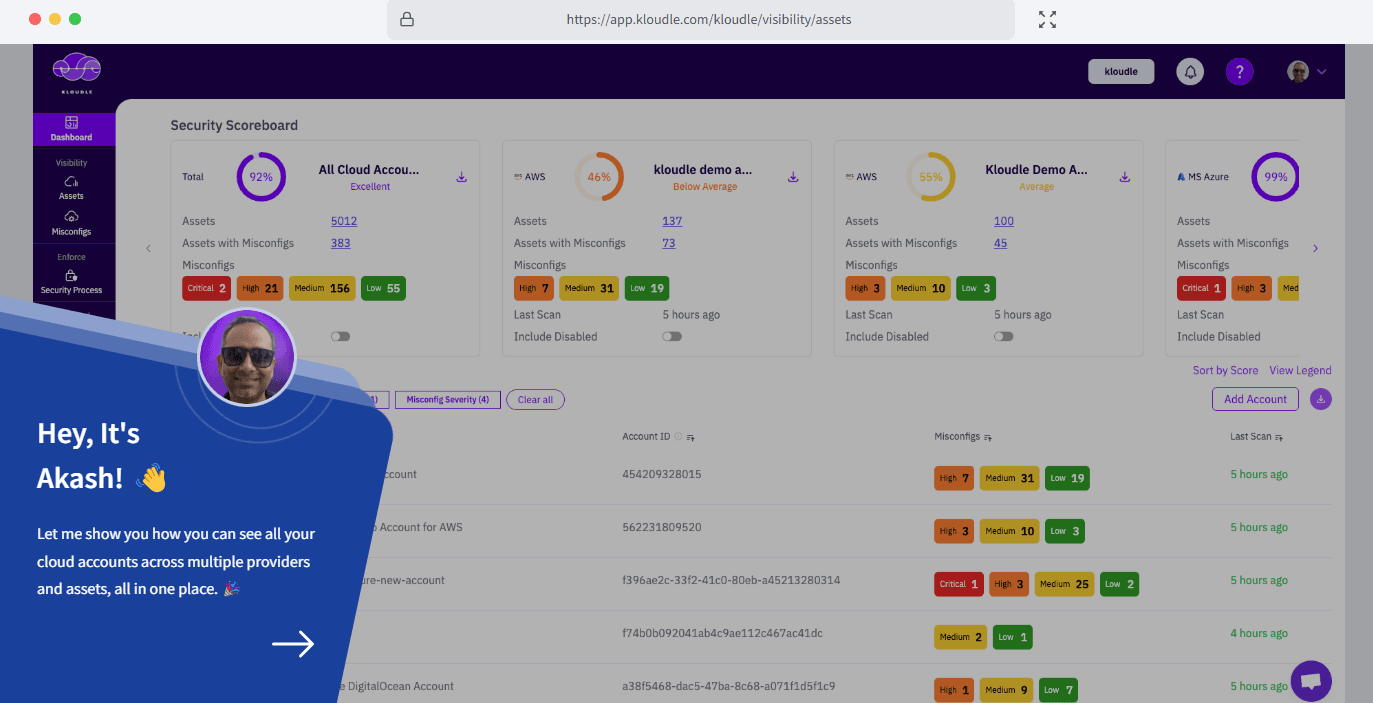
Take the example of
Kloudle, a cloud security automation platform. Their biggest challenge?
Helping developers understand and adopt automated cloud security tools without extensive onboarding sessions.The Problem?
Traditional product demos and onboarding processes were time-consuming and failed to highlight how Kloudle’s automation reduced human error in cloud security. Developers needed hands-on experience, but manual walkthroughs slowed down adoption.
How They Fixed It:
Kloudle refined its SaaS sales strategy by integrating interactive product tours and self-serve demos into its process with the help of SmartCue. This allowed them to:
Deliver real-time product walkthroughs showcasing how Kloudle automates security enforcement.
Provide guided onboarding experiences to help users explore key features without one-on-one support.
Educate prospects on cloud security best practices through interactive tutorials that demonstrate how to detect and fix misconfigurations.
The Results?
Higher engagement: More developers completed onboarding independently, reducing support requests.
Faster adoption: Prospects quickly understood how Kloudle’s automation worked, leading to faster decision-making.
Stronger retention: Users who experienced the product hands-on were more likely to stick with it long-term.
Build a High-Impact SaaS Sales Process That Works With SmartCue
Want to optimize your sales strategy like Kloudle? Here’s where to start:
Step 1: Sign Up & Access Your Demo Platform
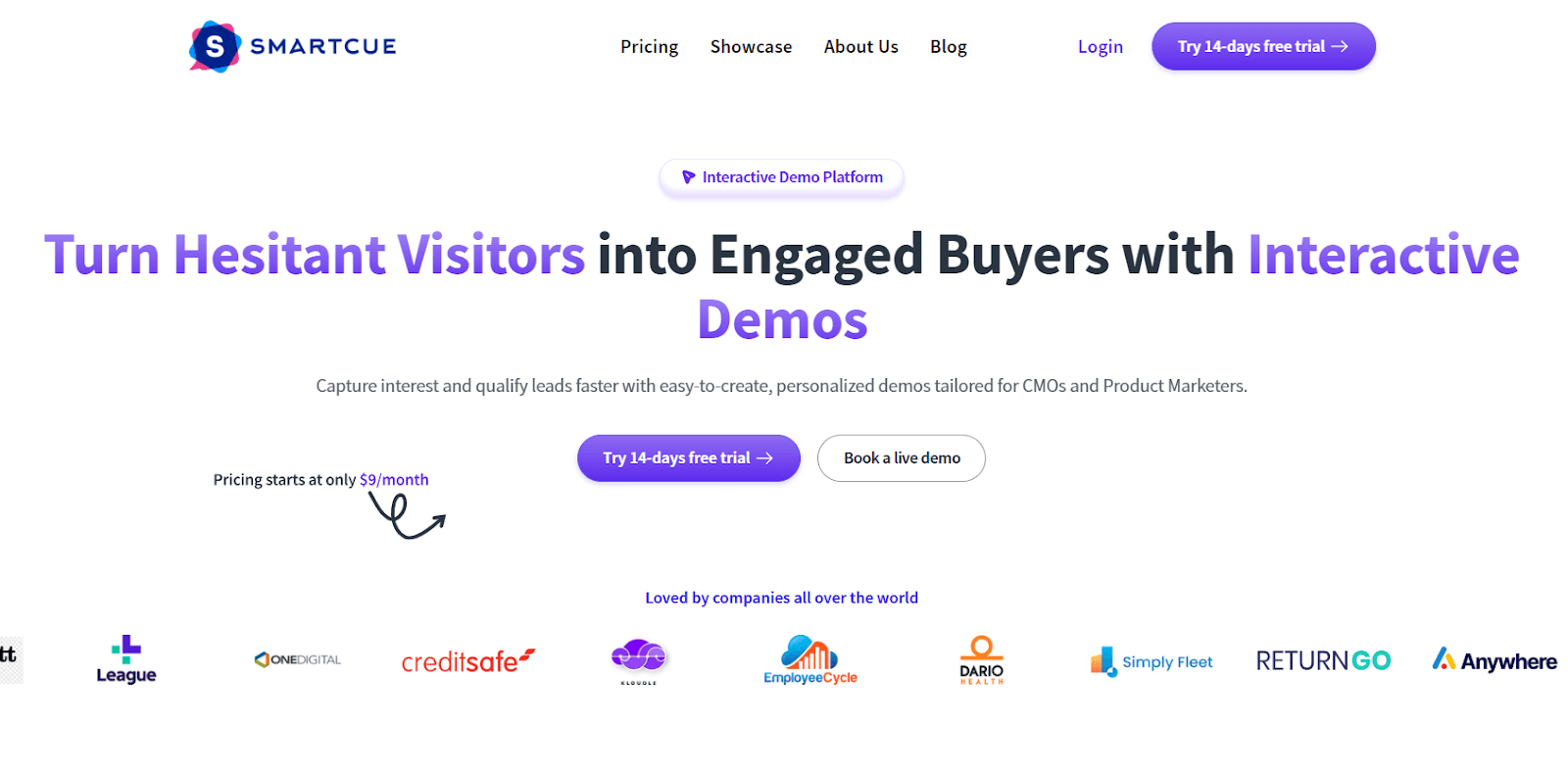
Start with a free trial and explore the intuitive interface designed for easy demo creation.
Step 2: Build a Walkthrough Tailored to Your Prospects
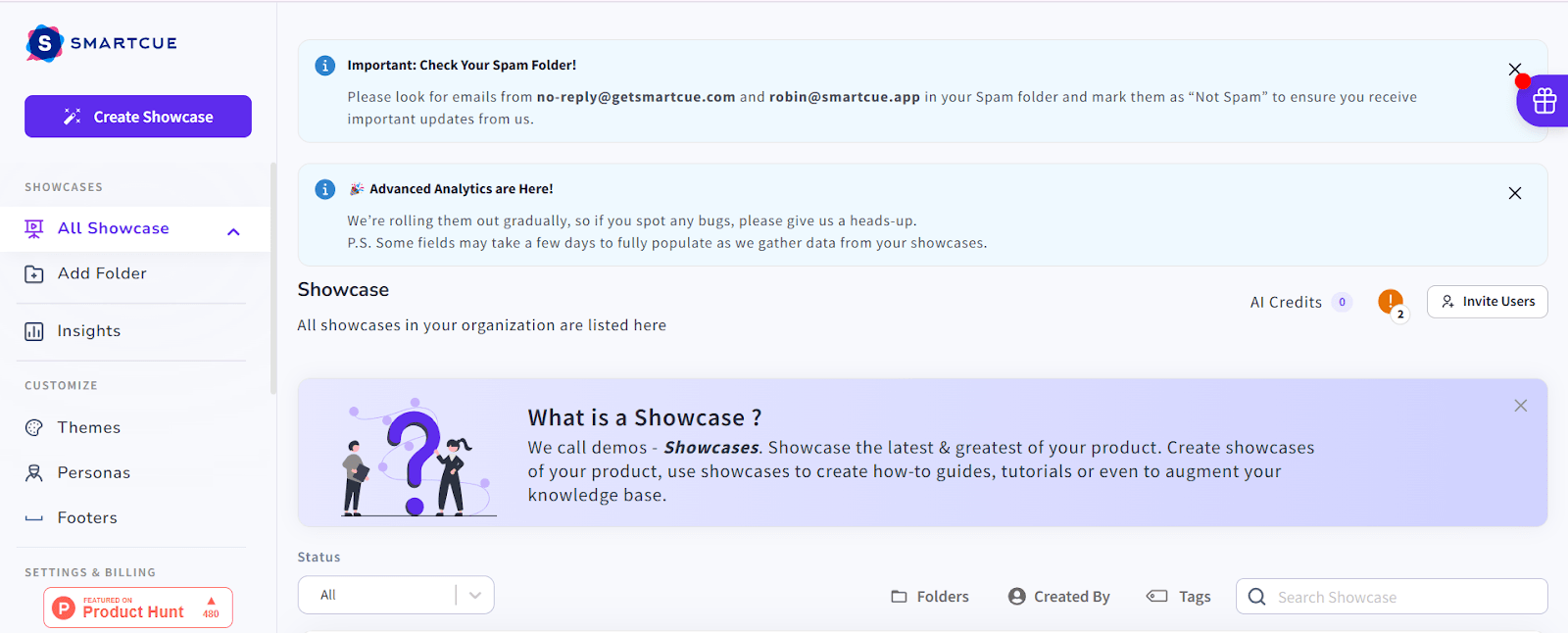
Customize interactive tours that highlight your product’s key value propositions.
Step 3: Optimize with Real-World Use Cases
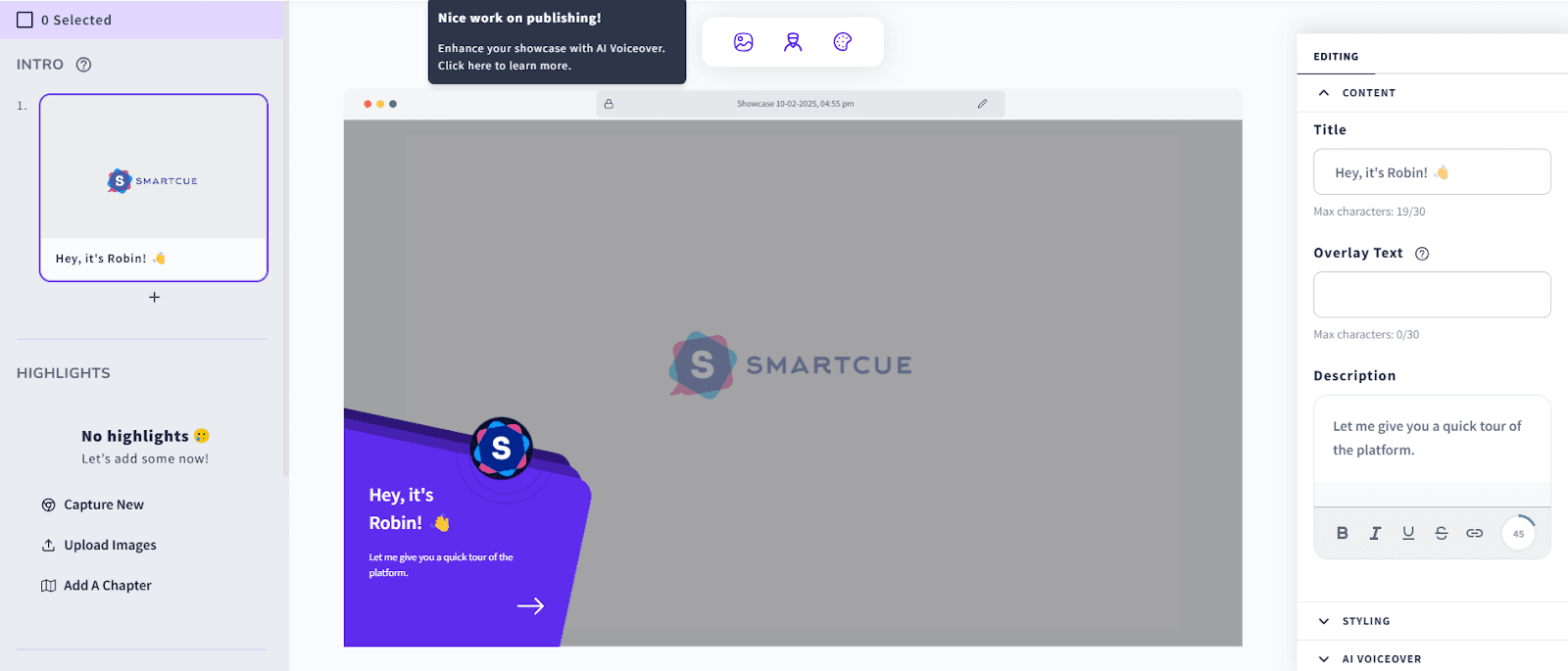
Use real customer scenarios to showcase problem-solving capabilities in action.
Step 4: Publish & Share Instantly
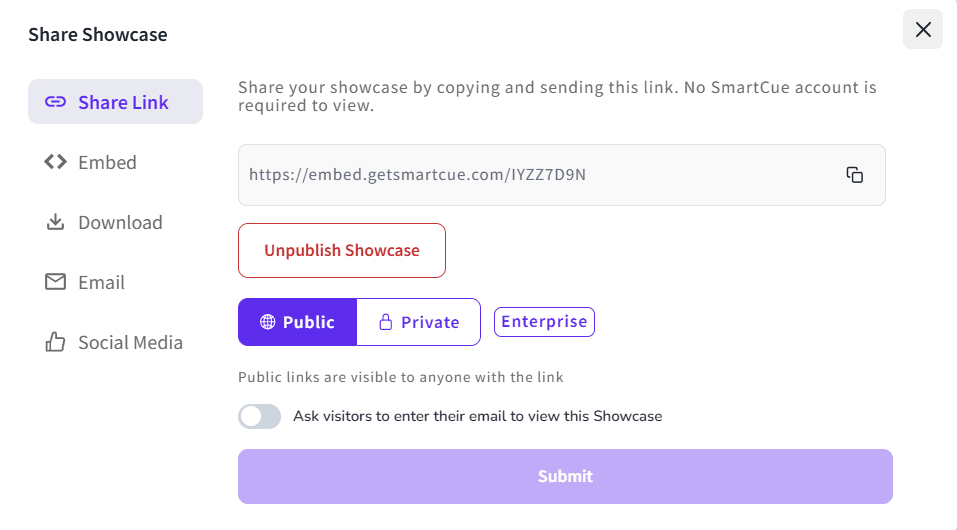
Deploy your self-serve demo across sales, marketing, and onboarding channels.
Let us help you set up your first demo and make it truly impactful. Just drop your email and book a slot—we’ll take care of the rest!
Frequently Asked Questions
How can I optimize my SaaS sales process?
Optimizing a SaaS sales process involves understanding your target customer, generating high-quality leads through lead generation and content marketing, effectively presenting your product value proposition, managing objections adeptly, closing deals, and nurturing customers for consistent value delivery. Additionally, implementing inbound marketing, cold calling, social media marketing, and SaaS marketing as part of a digital marketing campaign can be useful as well.
What are common challenges faced by SaaS sales teams?
Some common challenges include the complexity of the SaaS product requiring extensive customer education, elongated sales cycles due to pricing, sales cycle length, and decision-making factors, managing numerous features and customization options, addressing technical objections or doubts, and achieving customer retention in a highly competitive market landscape.
How do I choose the right SaaS sales model for my business?
Your choice of SaaS service sales model should depend on your product's nature and target customers. A self-service model may work best if you're selling a user-friendly, affordable product targeting individuals or small firms. However, transactional or enterprise SaaS sales models would be better suited for complex, higher-priced products catering to large businesses.
What metrics should I track to evaluate the success of my SaaS sales process?
Key metrics include Monthly Recurring Revenue (MRR and ARR), Customer Acquisition Cost (CAC), churn rate, Net Promoter Score (NPS), and Customer Lifetime Value (CLV). Others like win rate, number of new customers, number of customers, Sales Qualified Leads, Lead Velocity Rate, Deal Velocity, Closed-won/lost ratio, customer feedback, and Net Revenue Retention Rate can also provide valuable insights into your monthly recurring revenue.
